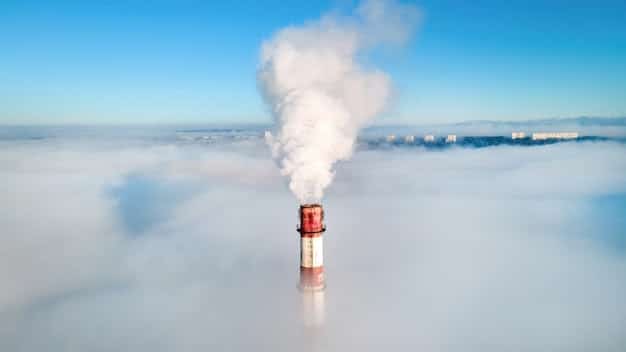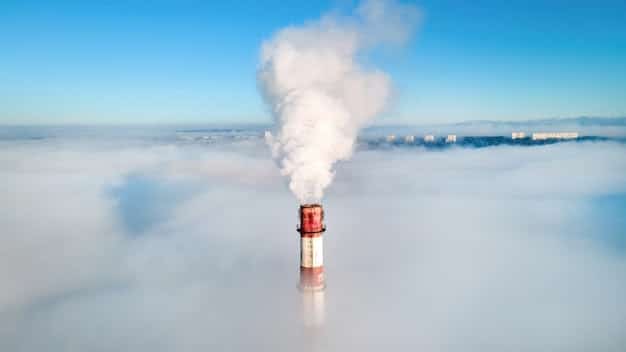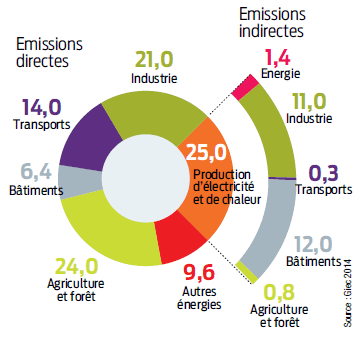
A ranking of the sources of greenhouse gas emissions established for our world in data for the year 2016 shows the diversity of the sectors concerned and alerts us to the difficulty of finding a rapid and appropriate response to each of the sources of pollution identified.
Energy consumption: 73.2%, of which
Energy used for industry: 24.2%, such as for iron and steel, petrochemicals, mining, textiles, food processing, ……
Road transport: 11.9%
Energy used for residential buildings: 10.9
Energy used for commercial buildings: 6.6%
Air transportation: 1.9%

Marine transportation: 1.7%
Agriculture and land use: 18.4%, of which
Livestock and manure use: 5.8
Maintenance of agricultural soils: 4.1
Deforestation: 2.2
Industrial processes: 5.2%, such as cement and chemical processes
Waste: 3.2%, including wastewater and landfills

In the industrial sector in particular, efforts to reduce greenhouse gas emissions must be combined with an increase in the production of clean energy, the energy efficiency of buildings and the way vehicles are driven, for example. But changing practices alone is not enough, it is also necessary to rely on technological innovations, which for certain sectors such as maritime or air transport, are not yet available on a large scale.
These data confirm those proposed in 2014 by the IPCC on polluting activities with an almost identical distribution:

Heat and electricity production: 35% of which fuel extraction, refining, processing and transport
Agriculture and land use: 24%.
Industry: 21%; and
Transport: 14% of the total
Buildings excluding electricity consumption: 6%.
The IPCC also had another classification relating to greenhouse gases emitted by human activities which is characterized as follows
Carbon dioxide, CO2: 76% of which fossil fuel combustion for 65% and forestry activities including deforestation and clearing of agricultural land for 11%.
Methane, CH4: 16% of which agricultural activities, waste management, energy consumption and biomass production
Nitrous oxide, N2O: 6% of which fertilizer and fossil fuel use
Fluorinated gases: 2% including refrigeration and various industrial and consumer processes that use hydrofluorocarbons (HFCs), perfluorocarbons (PFCs) and sulphur hexafluoride (SF6).
https://www.epa.gov/ghgemissions/global-greenhouse-gas-emissions-data





